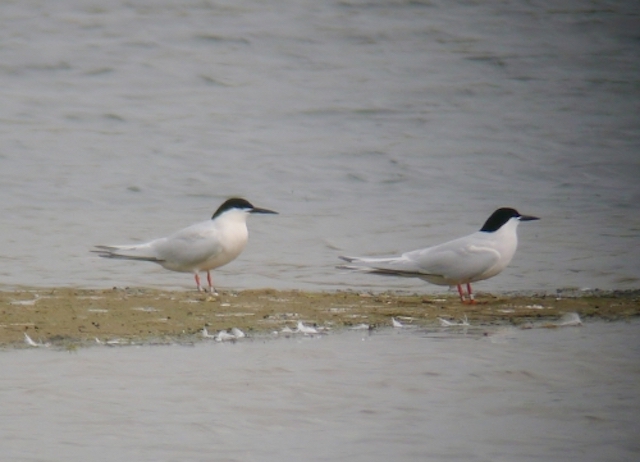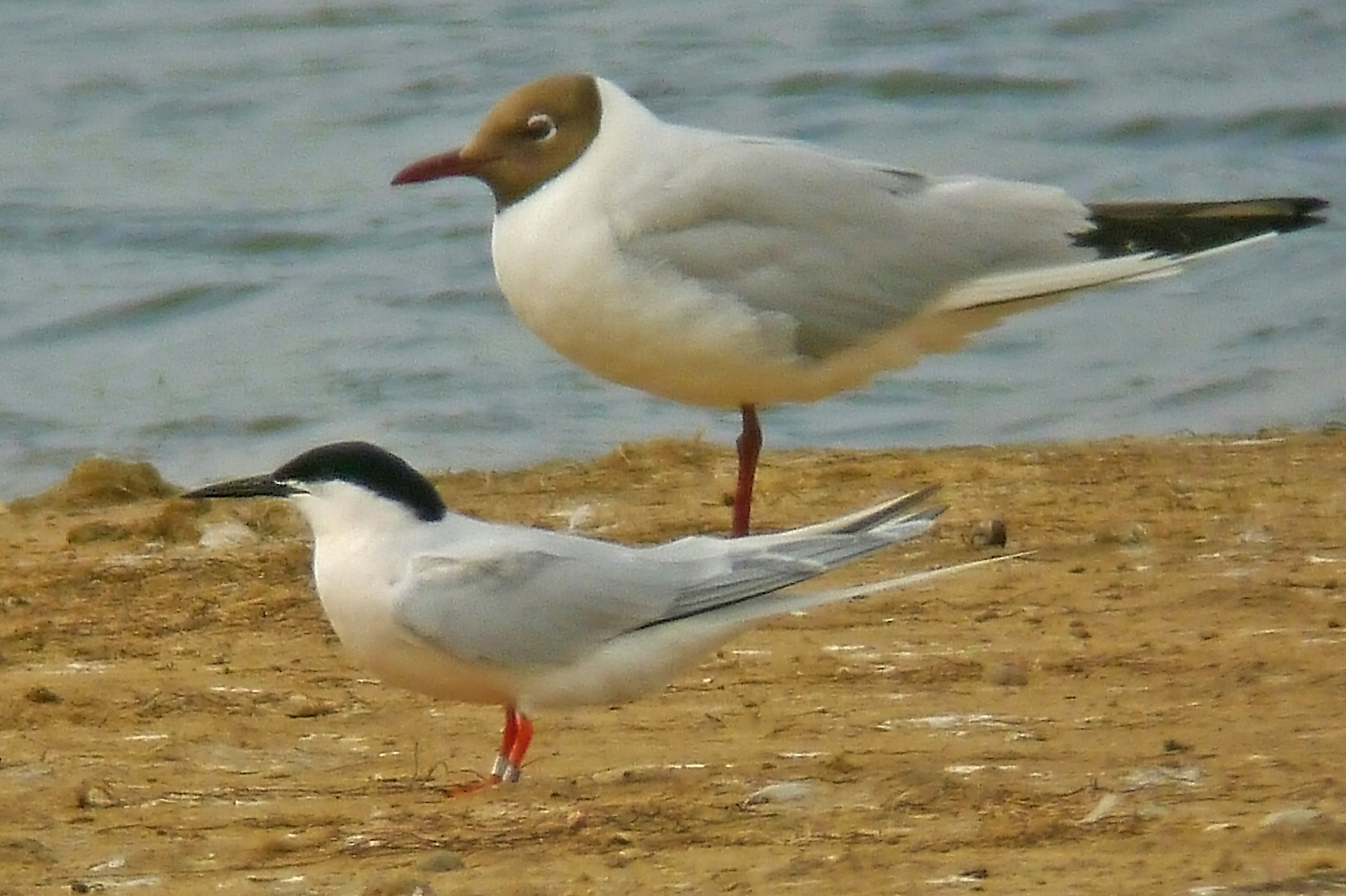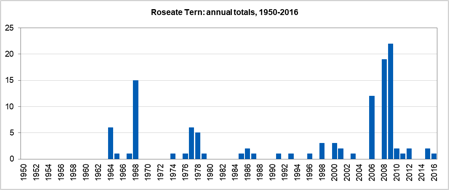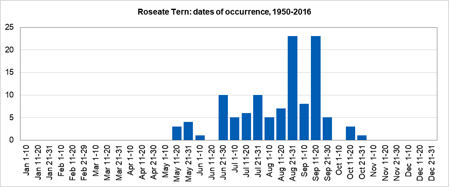Roseate Tern Sterna dougallii


Two on May 30th and four on September 1st, 1964 at Gibraltar Point NNR were the first confirmed county records. After 1964 they were recorded in 14 of the 36 years to 2000, mostly just 1-3 birds but with an exceptional 15 in September 1968 roosting on the beach at Gibraltar Point NNR. Numbers per year and dates of occurrence were analysed 1950-2016, and are summarised in the histograms below.
Looking at a more recent period, 2001-2019, Roseate Terns were recorded in every year except for 2002, 2005 and 2013. These were mostly single birds except for 2008 (4), 2009 (5) and 2009 (8). They have been recorded in every month April-October, peaking in mid-August to mid-September. The earliest spring record was April 27th, 1979 at Gibraltar Point NNR and the latest in autumn October 22nd, 2006 at Freiston Shore. There has been one ringing recovery in the county: SX96930 was ringed as a nestling at Rockabill (Dublin) on July 7th 1999 and was found (long dead) at Gibraltar Point on January 9th 2000, some 423 km east. The best locations to look for them in the county are the very large Tern roosts in the autumn at Horseshoe Point or Gibraltar Point, and coastal sites which have breeding colonies of Common Terns, S. hirundo, such as Freiston Shore.
The fortunes of Roseate Tern in Britain show a significant downward 25-year trend of -47% to 2017. From a peak of 172-177 prs in 1989 a nadir was reached in 2012 when only 73 pairs bred although there has been a recent upturn 2015-2017 with confirmed breeding by 113, 106 and 112 pairs respectively. This trend was continued into 2022 when more than 150 pairs nested on Coquet Island, their only UK breeding site. After reaching their highest ever numbers there, the colony was sadly hit by the Highly Pathogenic Avian Influenza virus which has killed more than half of the breeding adults and their chicks.



